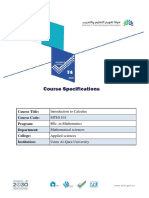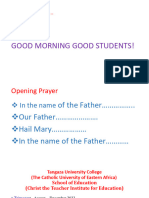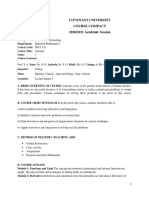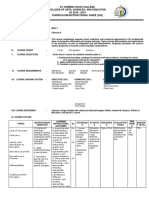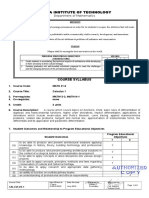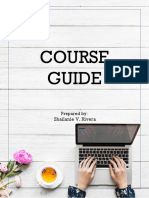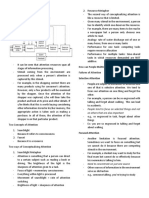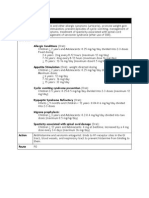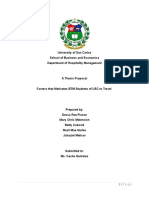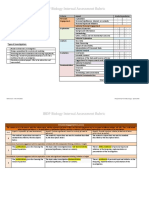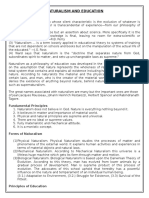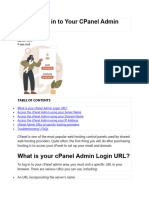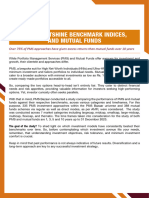0% found this document useful (0 votes)
13 views8 pagesMath 101 Course Specification
Calculus 1 (MATH 101) is a required 3-credit course at Princess Nourah bint Abdulrahman University, designed to introduce students to fundamental calculus concepts including limits, continuity, and derivatives. The course includes traditional classroom instruction with a total of 45 contact hours and various assessment methods such as quizzes, midterm, and final exams. The course aims to equip students with the necessary knowledge and skills to solve calculus problems effectively.
Uploaded by
hsjqchmcpjCopyright
© © All Rights Reserved
We take content rights seriously. If you suspect this is your content, claim it here.
Available Formats
Download as PDF, TXT or read online on Scribd
0% found this document useful (0 votes)
13 views8 pagesMath 101 Course Specification
Calculus 1 (MATH 101) is a required 3-credit course at Princess Nourah bint Abdulrahman University, designed to introduce students to fundamental calculus concepts including limits, continuity, and derivatives. The course includes traditional classroom instruction with a total of 45 contact hours and various assessment methods such as quizzes, midterm, and final exams. The course aims to equip students with the necessary knowledge and skills to solve calculus problems effectively.
Uploaded by
hsjqchmcpjCopyright
© © All Rights Reserved
We take content rights seriously. If you suspect this is your content, claim it here.
Available Formats
Download as PDF, TXT or read online on Scribd
/ 8

